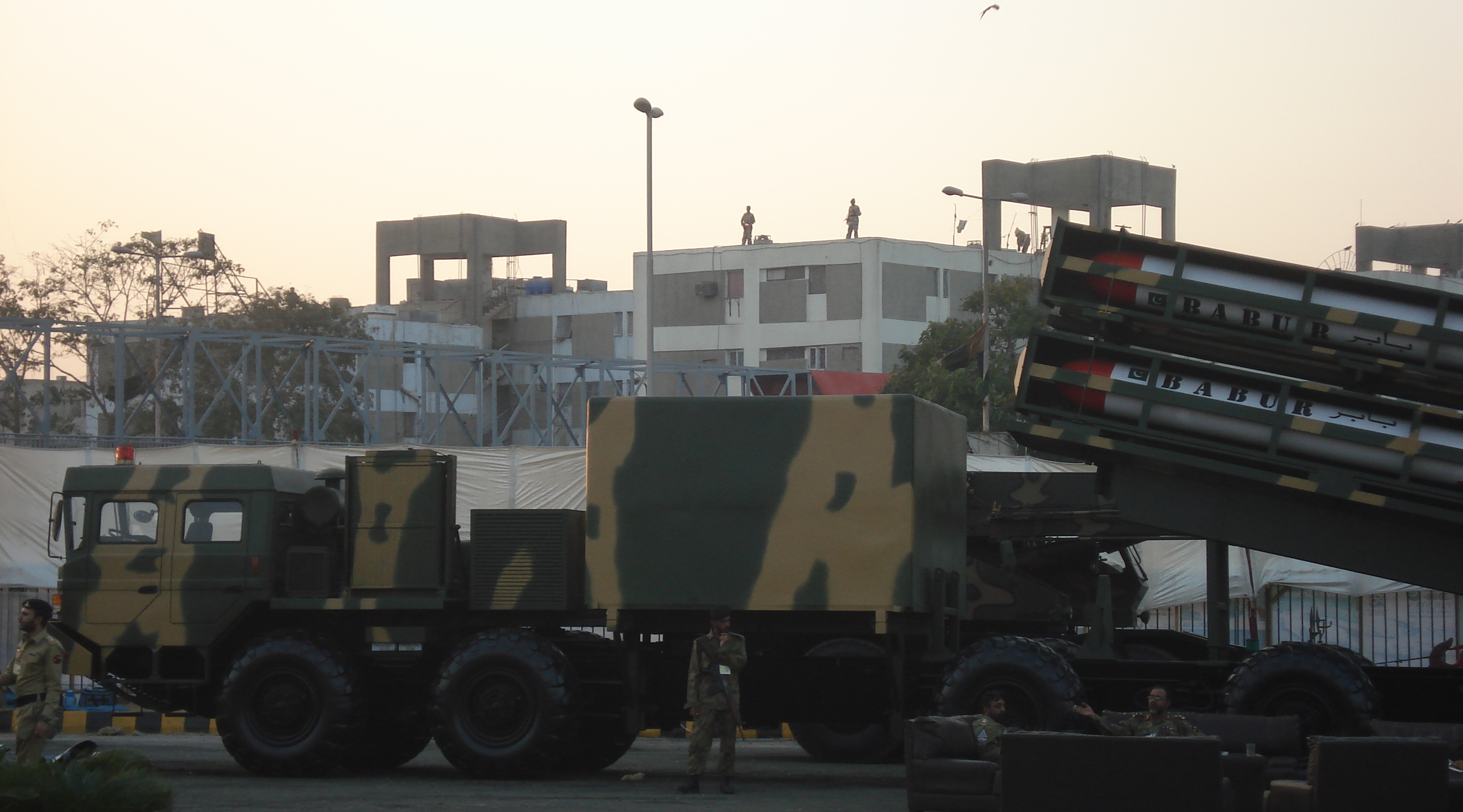Army Strategic Forces Command (Pakistan) on:
[Wikipedia]
[Google]
[Amazon]
The Army Strategic Forces Command (ASFC) is a strategic and missile formation of the
 The Army's strategic forces command maintains and controls the employment of the
The Army's strategic forces command maintains and controls the employment of the
Pakistan Army
The Pakistan Army (, ), commonly known as the Pak Army (), is the Land warfare, land service branch and the largest component of the Pakistan Armed Forces. The president of Pakistan is the Commander-in-chief, supreme commander of the army. The ...
. Headquartered at the Joint Staff HQ in Chaklala near Rawalpindi, the strategic command controls the land-based ballistics
Ballistics is the field of mechanics concerned with the launching, flight behaviour and impact effects of projectiles, especially weapon munitions such as bullets, unguided bombs, rockets and the like; the science or art of designing and acceler ...
and cruise missile
A cruise missile is an unmanned self-propelled guided missile that sustains flight through aerodynamic lift for most of its flight path. Cruise missiles are designed to deliver a large payload over long distances with high precision. Modern cru ...
systems
A system is a group of interacting or interrelated elements that act according to a set of rules to form a unified whole. A system, surrounded and influenced by its environment, is described by its boundaries, structure and purpose and is exp ...
—both nuclear and conventional.
Its organizational structure is model based on the conventional corps with its operations similar to Regiment of Artillery, and responsible only for the ground-based strategic nuclear deterrence.
History
In Pakistani military terminology, the missiles are understood as self-propelled projectile ammunition that can be used as anartillery
Artillery consists of ranged weapons that launch Ammunition, munitions far beyond the range and power of infantry firearms. Early artillery development focused on the ability to breach defensive walls and fortifications during sieges, and l ...
. The army's strategic forces command provides the Pakistani military strategists a ground-based option for operational nuclear deterrent. Establishment of the strategic forces command came with many hurdles when it comes to military deployment of nuclear weapons since very few Pakistani army officers had modest understanding of military strategy involving nuclear weapons deployment— it mostly relied on U.S. military's field manuals.
The organizational structure of the army's strategic force command is modeled after the conventional corps with many star ranking officers came from the Regiment of Artillery, including Lt-Gen. Khalid Kidwai who was its first officer. Although, the army's strategic forces command functions under the security parameters of Strategic Plans Division of the National Command Authority (NCA), it is a military unit that forms the strategic deterrent together with the Air Force and the Navy.}
In March 2000, the formation was organized at command level based and entirely influenced on conventional corps and artillery formation structure. In 2002, this command was only made responsible for ground-based nuclear deterrent with First Strike strategy with first battalions of missile batteries were created; the army's command has only command and control (C2) of the deployed nuclear weapons on missile system.
Despite its size, structural organization, and importance given since 2004, the coherent operational command, control, communication, and intelligence (C3I) remains link to be with the Pakistan Air Force's Strategic Command, which has the control over the launch and target selection of the nuclear weapons.
Employment
 The Army's strategic forces command maintains and controls the employment of the
The Army's strategic forces command maintains and controls the employment of the transporter erector launcher
A transporter erector launcher (TEL) is a missile vehicle with an integrated tractor unit that can transport, elevate to a firing position and launch one or more rockets or missiles.
History
Such vehicles exist for both surface-to-air missiles ...
s, which is a primary ground-based delivery system. The strategic forces command is distributed among the Pakistan Army Reserves North and South formation, focusing towards its eastern border.
Both Pakistan Army Reserves controls the numbers of missile groups that are equivalent to Brigade
A brigade is a major tactical military unit, military formation that typically comprises three to six battalions plus supporting elements. It is roughly equivalent to an enlarged or reinforced regiment. Two or more brigades may constitute ...
formation, which loosely follows the Pakistan Army's Regiment of Artillery's field manual and its command structure. The army's strategic forces command support capabilities is supported by the numbers of regiments consisting of signals, engineers, surveyors, intelligence, security elements, and among others.
In spite of its size and importance, the Army's strategic forces command does not have operational access to launch codes or any access to the nation's nuclear weapons; and the release of weapon comes directly from the authorization at higher level of military leadership based in JS HQ and the civilian leadership in Islamabad. This action prevented the accidental launch of the weapon system or mishappening. In addition, the Army HQ has missile batteries and support battalions routinely rotated in the country that makes it difficult to exact its permanent size and troops strength.
Influence
In 2004, thePakistan Navy
The Pakistan Navy (PN) (; ''romanized'': Pākistān Bahrí'a; ) is the naval warfare branch of the Pakistan Armed Forces. The Chief of the Naval Staff, a four-star admiral, commands the navy and is a member of the Joint Chiefs of Staff Com ...
, which follows the training manuals and tradition of the Pakistan Army, established its own separated strategic command. Besides the army, the navy is the only military service that controls its own class of guided and cruise missile systems.
The Pakistan Army supported the Pakistan Navy's command by terming its command as "custodian of the nation's 2nd strike capability" in 2008.
List of Commanders
References
{{Strategic forces Strategic forces of Pakistan Commands of Pakistan Army Military units and formations established in 2000 2000 establishments in Pakistan